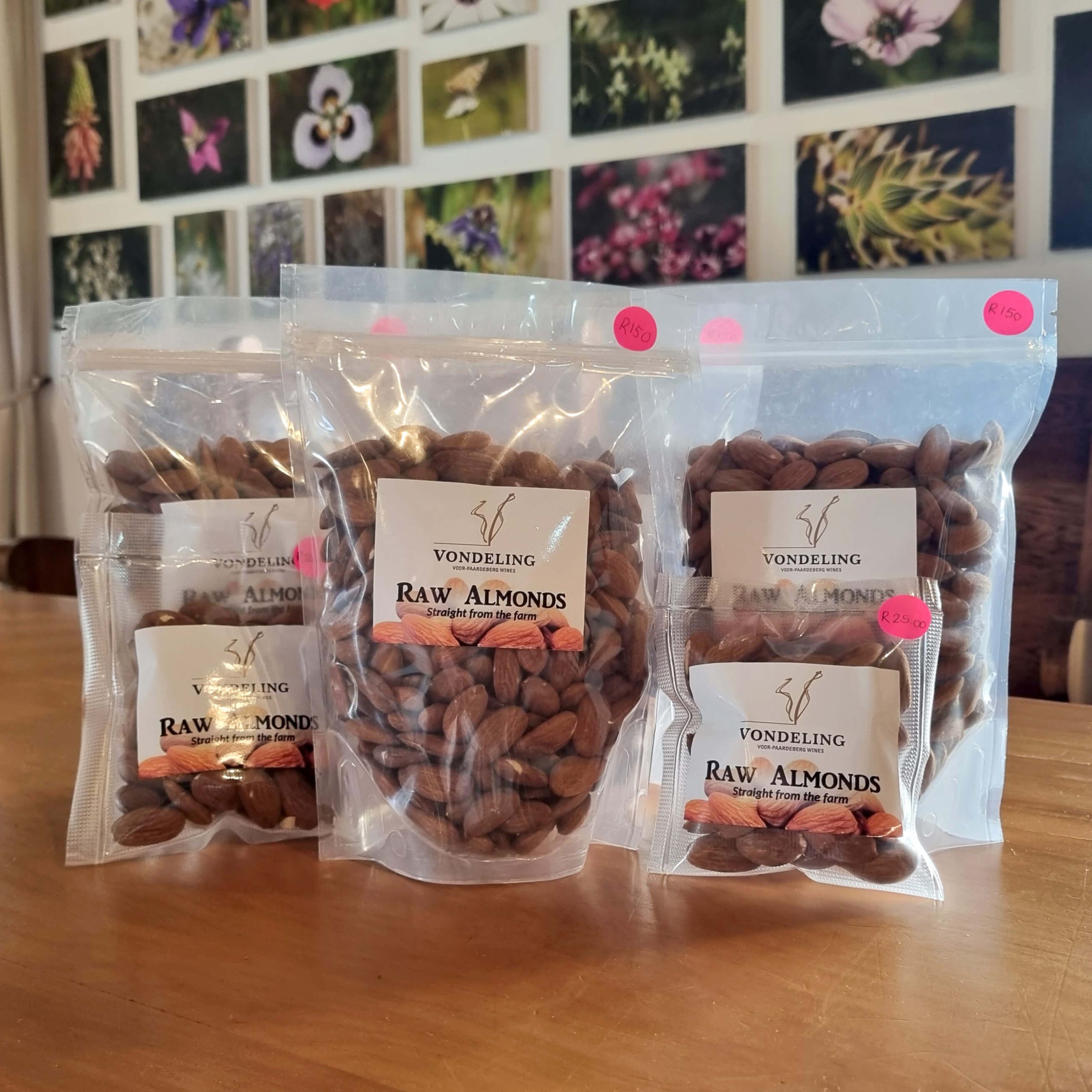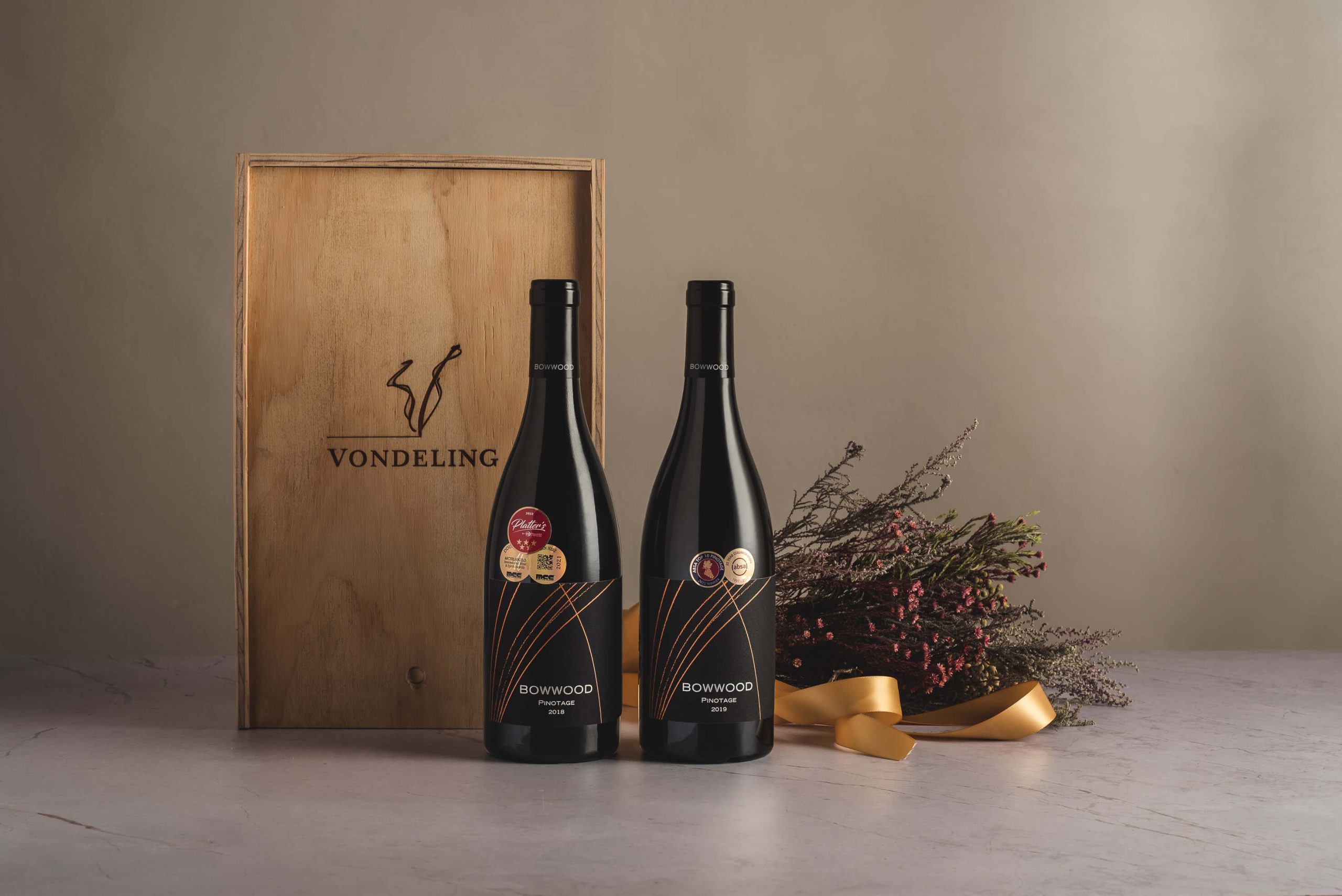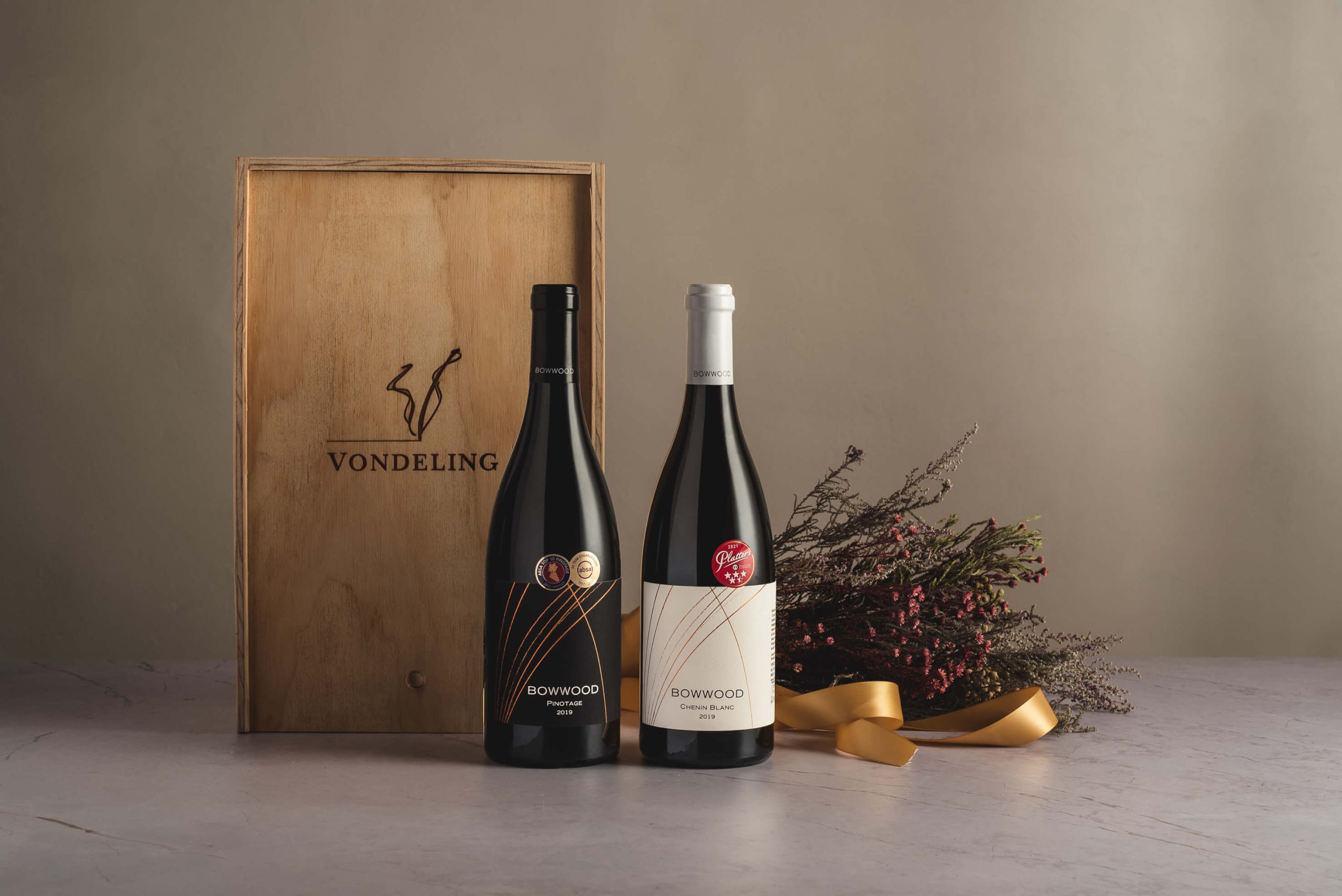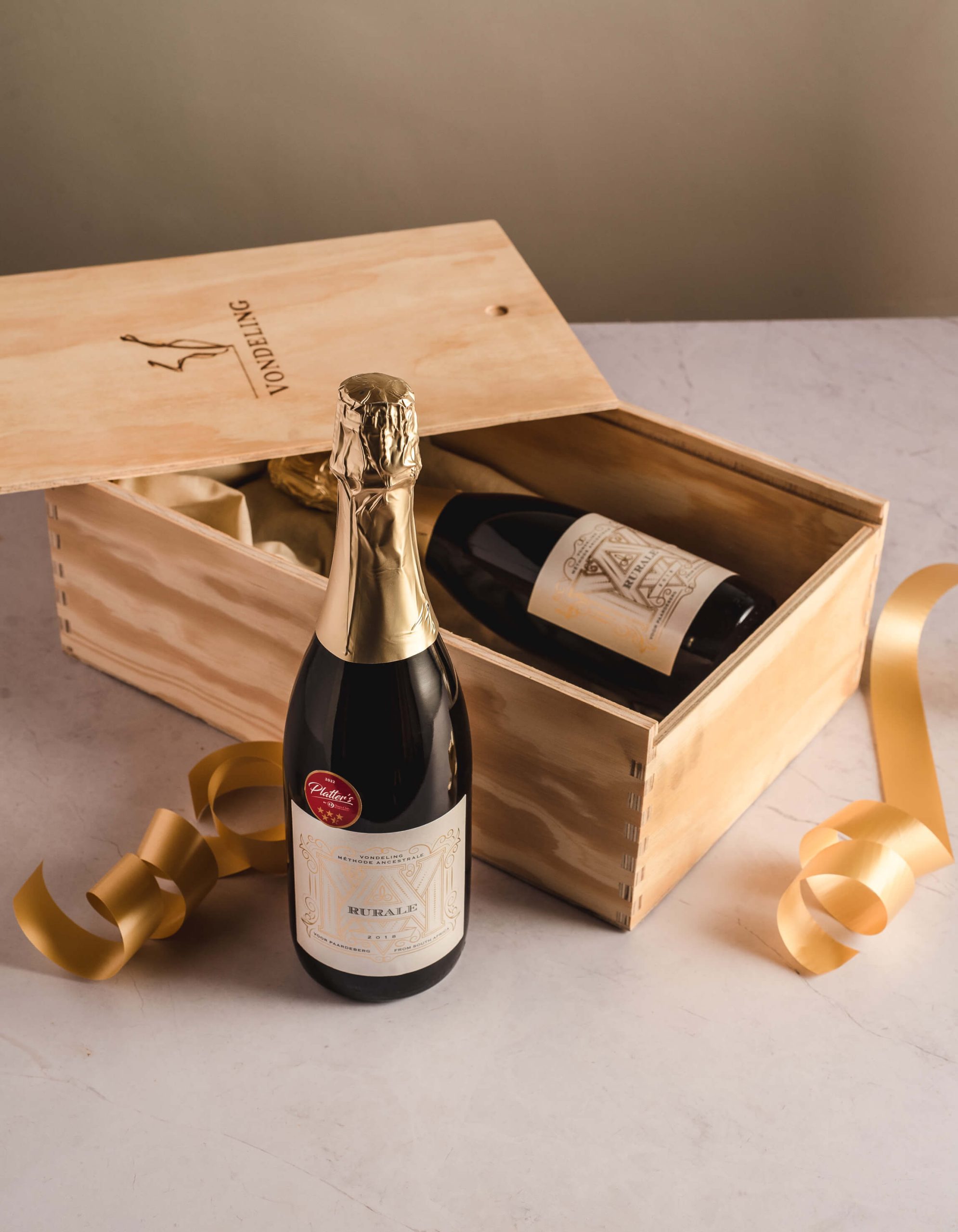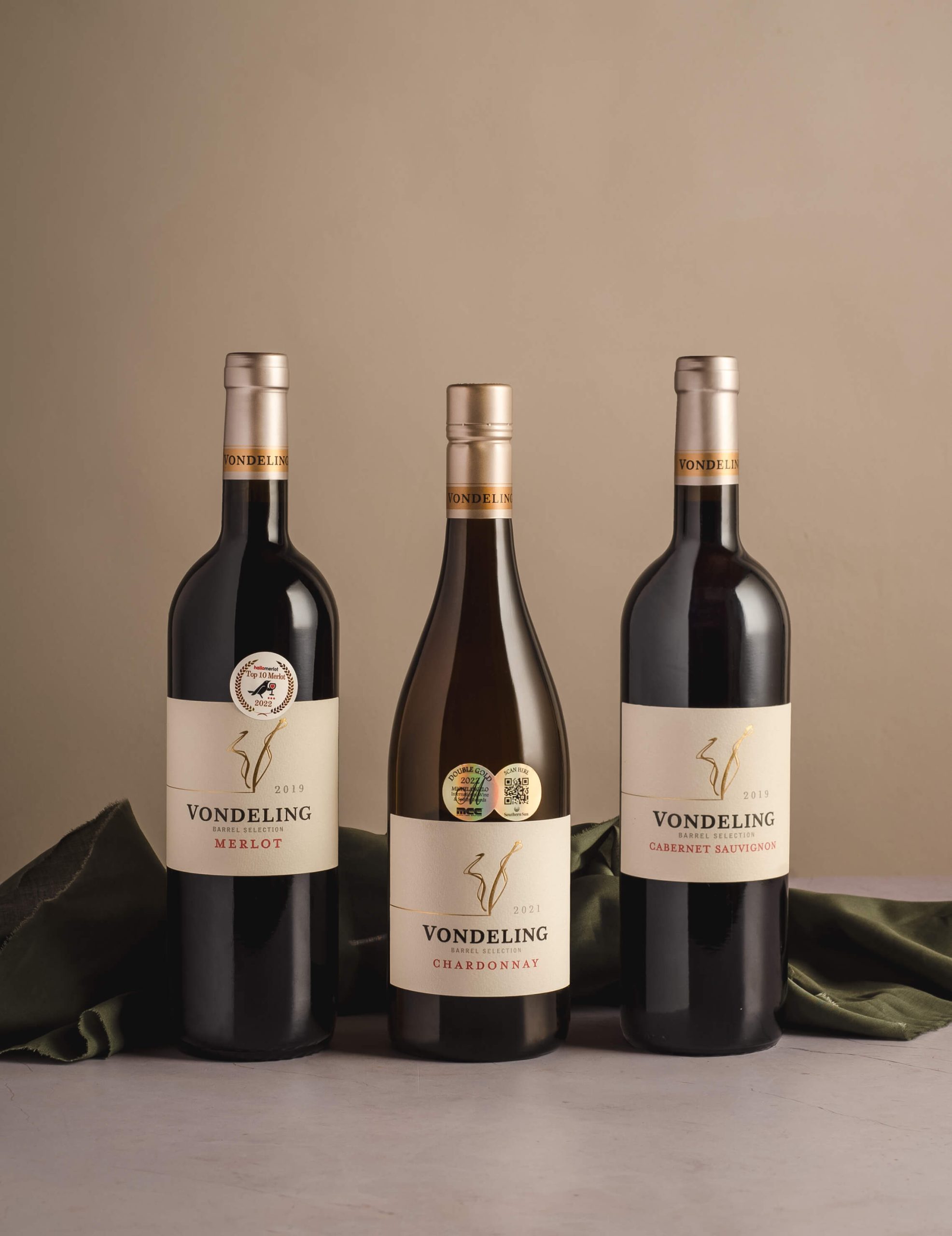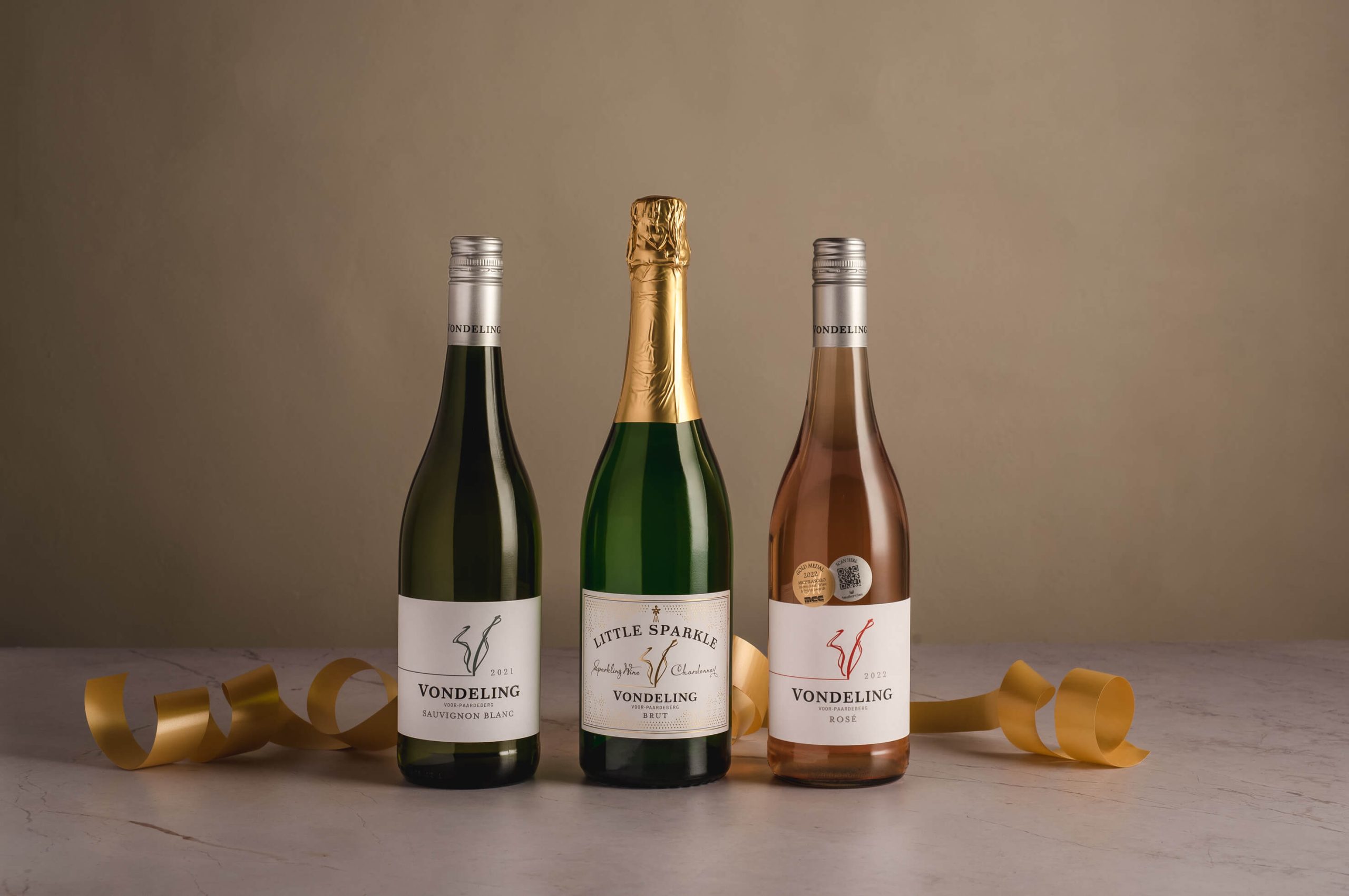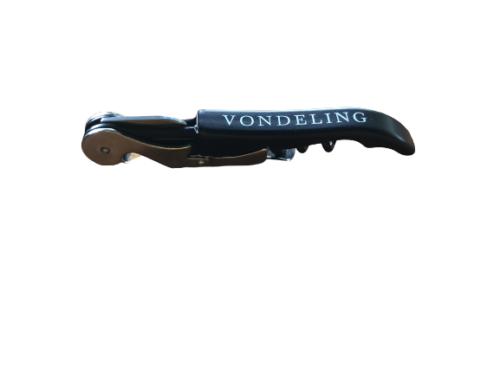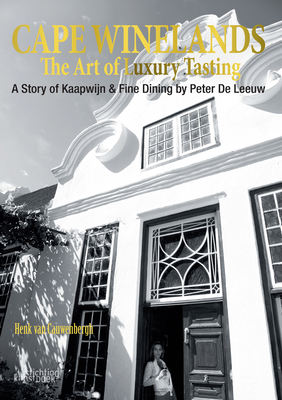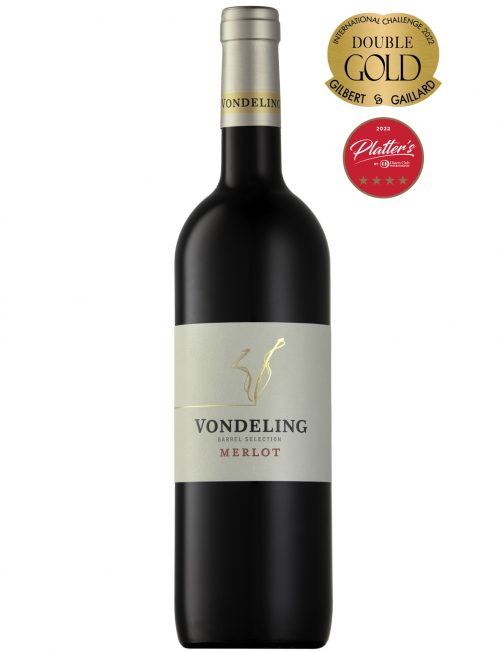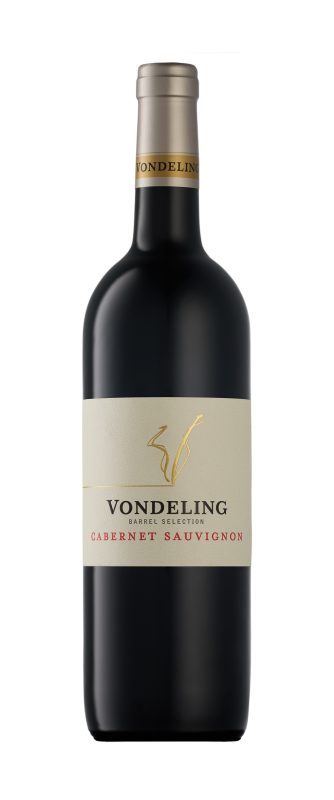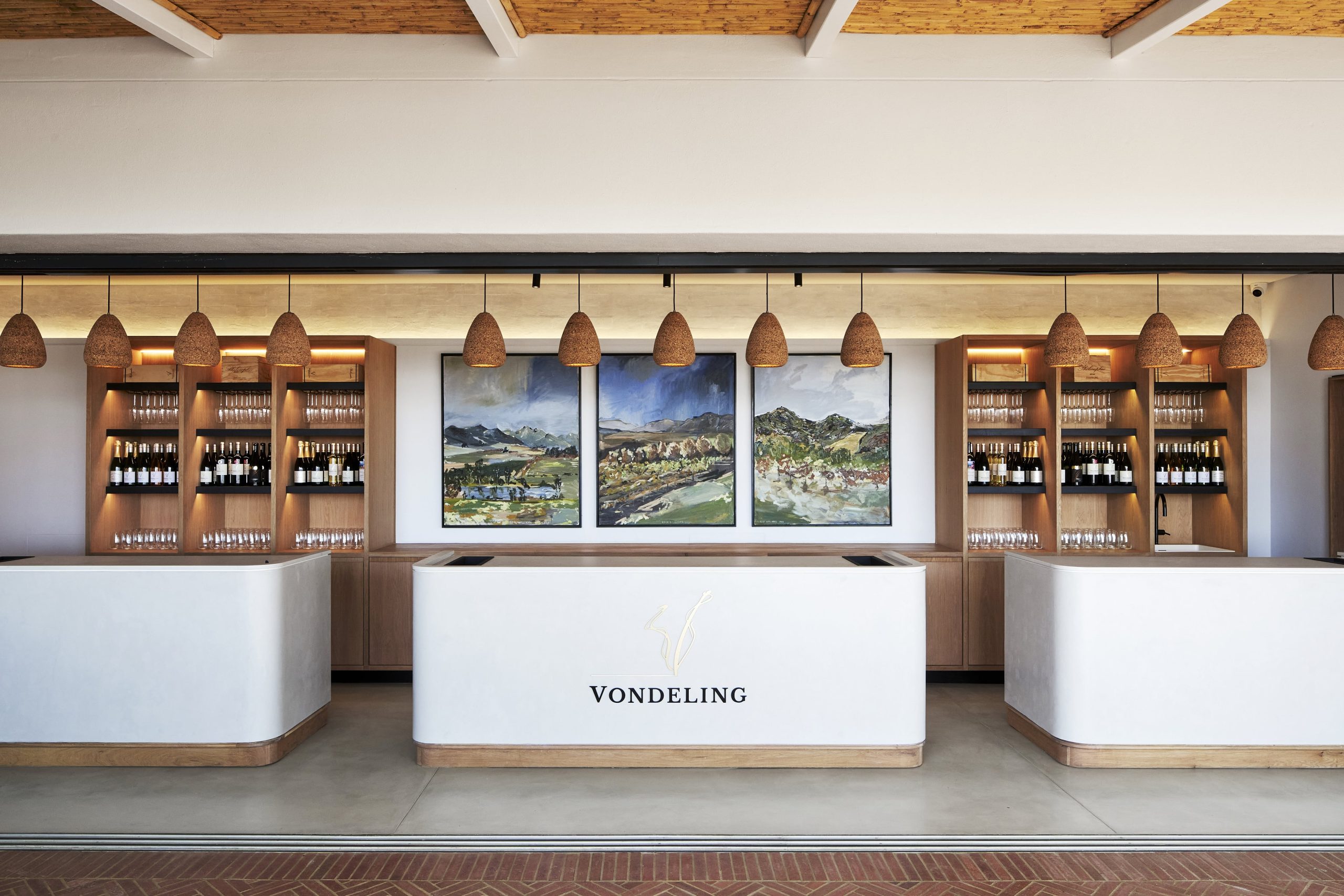-
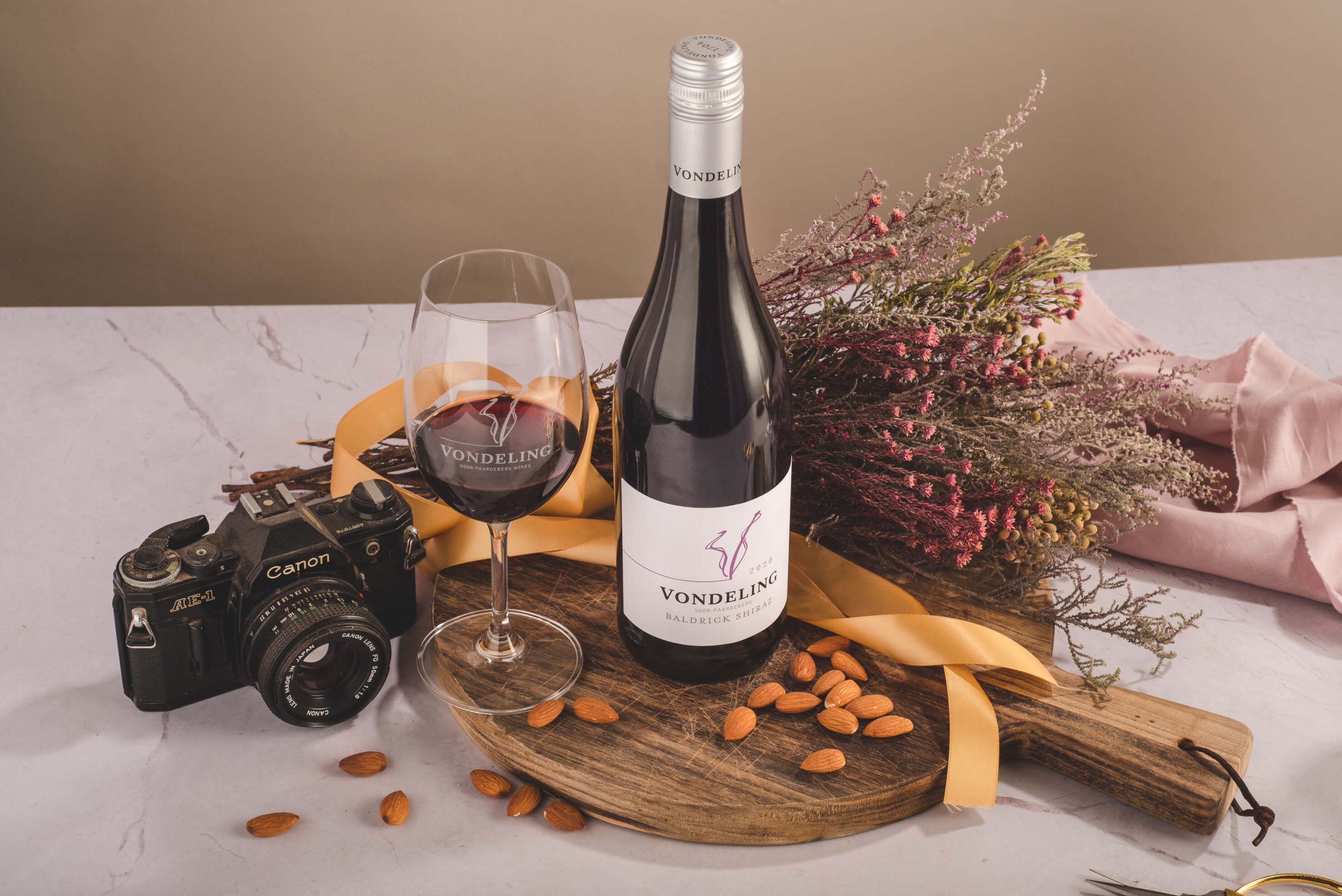
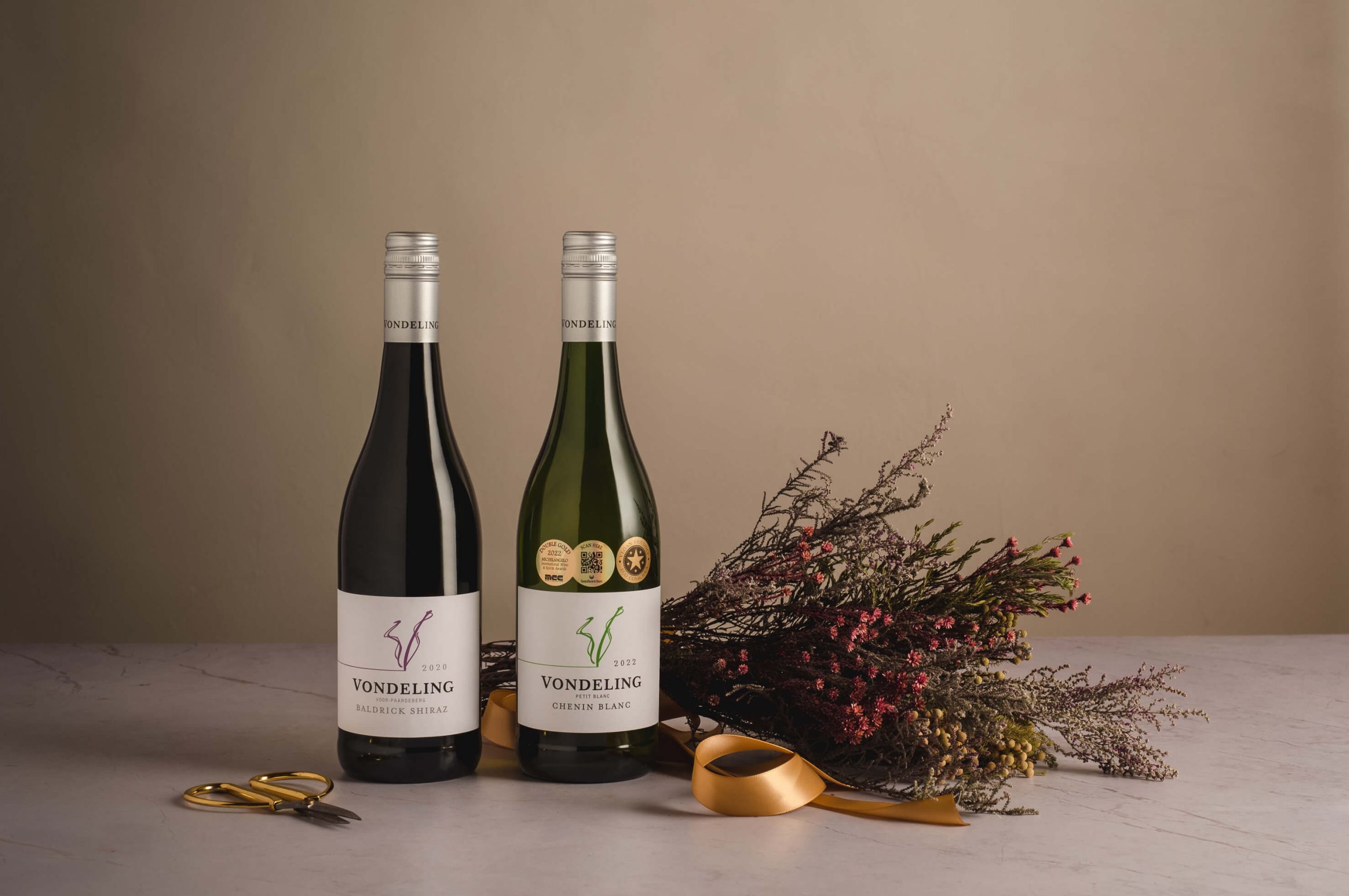
Petit Gift Pack (2 pack option)
R210.00 (incl. VAT)
Option 1: Petit Chenin Blanc 2023 & Baldrick Shiraz 2021 OR Option 2: Petit Rouge Merlot 2021 & Sauvignon Blanc 2023 OR Option 3: Petit Chenin Blanc 2023 & Rose 2022 OR Option 4: Petit Rouge Merlot 2021 & Rose 2022 Packaged in a sophisticated, branded 2-pack cardboard wine carrier, finished with ribbon & fynbos from the farm. -
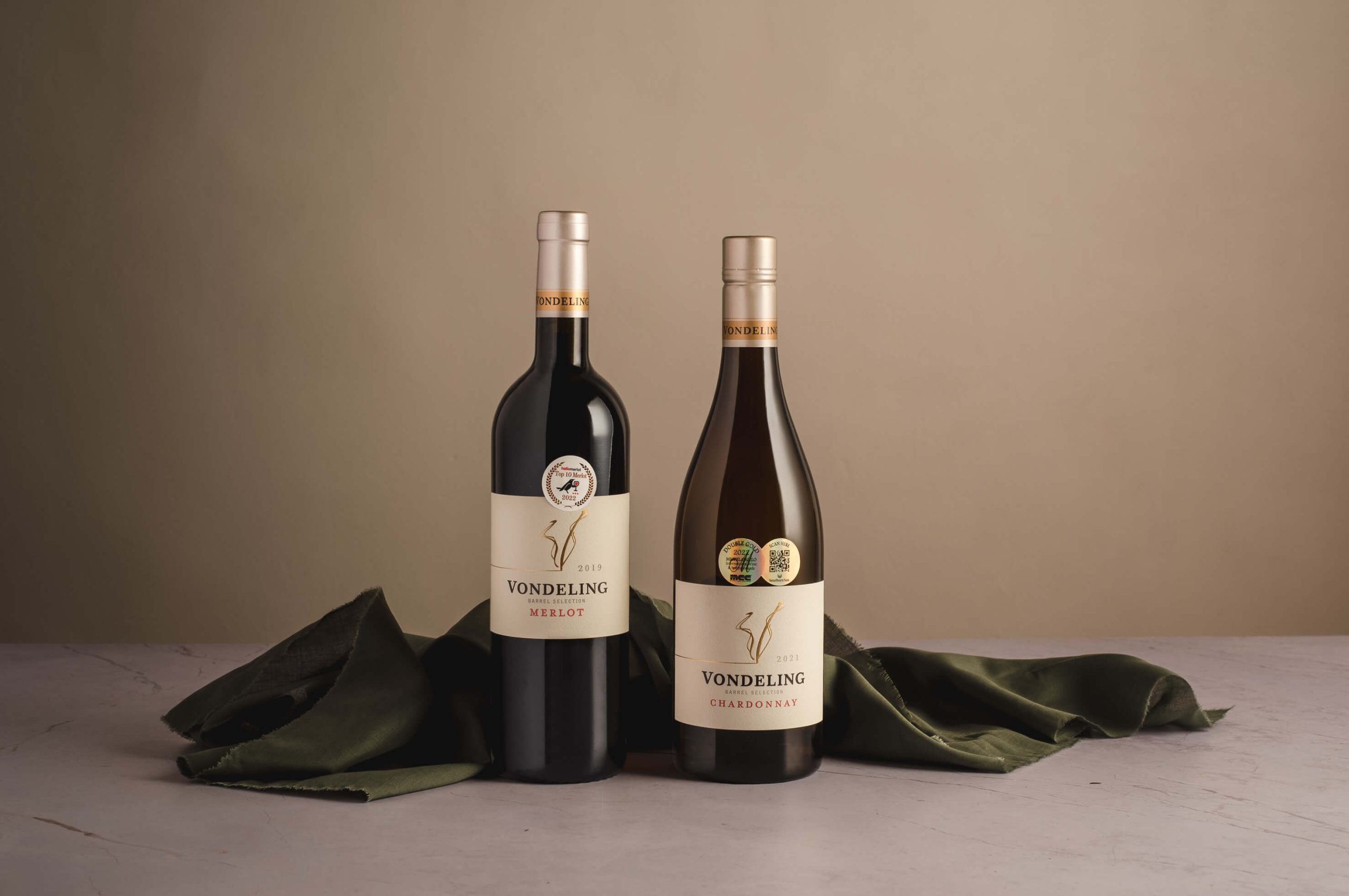
Barrel Selection Gift Pack (2 pack option)
R375.00 (incl. VAT)
Option 1: Barrel Selection Chardonnay 2023 & Barrel Selection Merlot 2020 OR Option 2: Barrel Selection Chardonnay 2023 & Barrel Selection Cabernet Sauvignon 2021 Packaged in a sophisticated, branded 2-pack cardboard wine carrier, finished with ribbon & fynbos from the farm. -
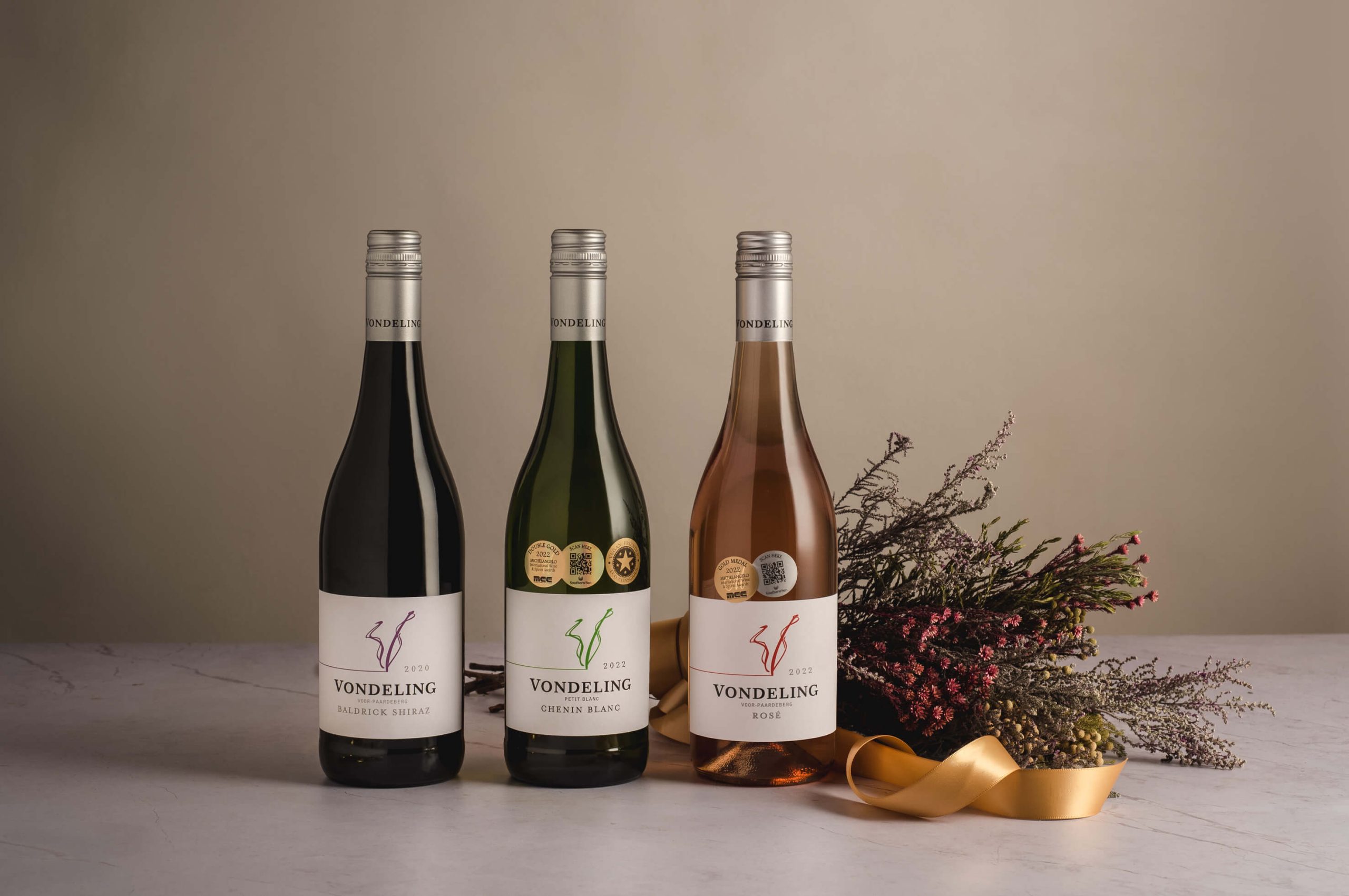
Petit Gift Pack (3 pack option)
R315.00 (incl. VAT)
Option 1: Petit Chenin Blanc 2023 & Rose 2023 & Petit Rouge Merlot 2021 OR Option 2: Petit Chenin Blanc 2023 & Rose 2023 & Baldrick Shiraz 2021 OR Option 3: Sauvignon Blanc 2023 & Rose 2023 & Petit Rouge Merlot 2021 OR Option 4: Sauvignon Blanc 2023 & Rose 2023 & Baldrick Shiraz 2021 Packaged in a sophisticated, branded 3-pack cardboard wine carrier, finished with ribbon & fynbos from the farm. -
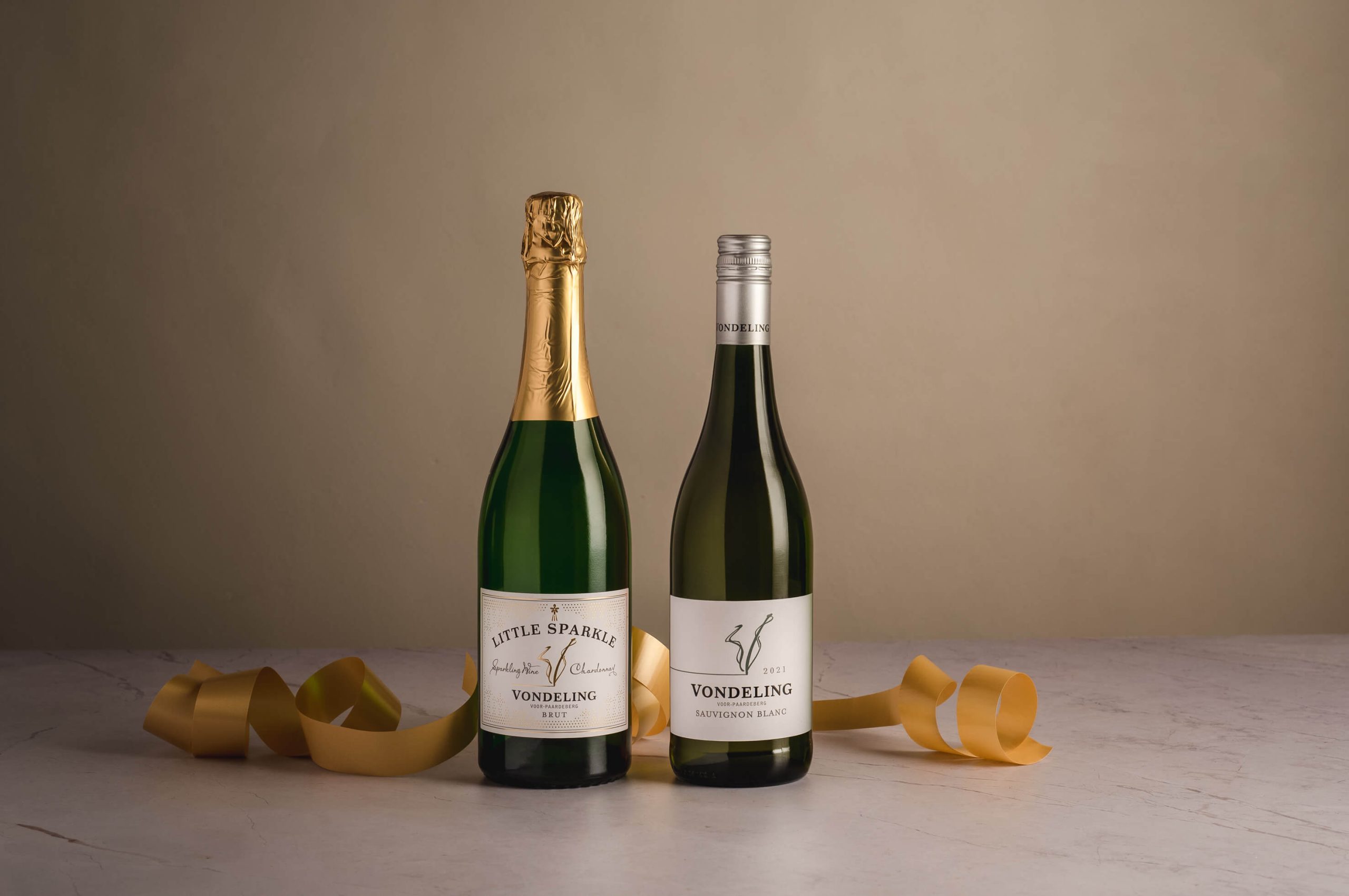
Festive Summer Gift Pack (2 pack option)
R223.00 (incl. VAT)
Little Sparkle (100% Chardonnay Sparkling Brut) & Option 1: Sauvignon Blanc 2023 OR Option 2: Petit Chenin Blanc 2023 OR Option 3: Petit Rouge Merlot 2021 OR Option 4: Baldrick Shiraz 2021 Packaged in a sophisticated, branded 2-pack cardboard wine carrier, finished with ribbon & fynbos from the farm. -
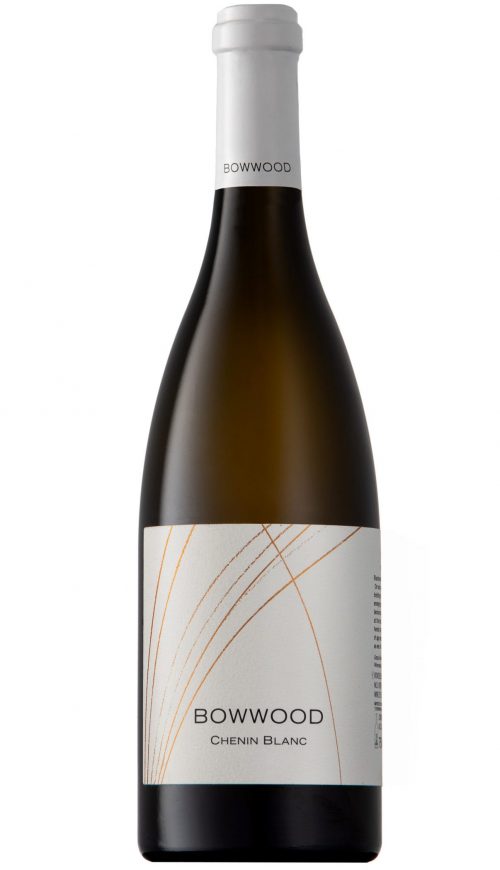 (100% Chenin Blanc) VINEYARDS This wine is made from a single, site-specific vineyard, planted in ancient granitic soils. It’s the highest vineyard on Vondeling and offers magnificent views of our beautiful Voor Paardeberg region. The elevation of the vines, as well as the steepness of the slope and a Southfacing aspect, ensure that this is our coolest location. The vineyard has poor vigour and the vines are shy yielding. This ensures tiny berries with concentrated flavour and vibrant acidity. VINIFICATION The grapes are hand-picked in mid-February with a ripeness of 23.5 Balling. Each bunch is pre-chilled before being whole bunch pressed. The juice remains unsettled and is transferred immediately to French Oak barrels for fermentation. At no stage is yeast or acid added and the “Dirty juice” acts as a nutrient source for the indigenous yeast. It also imparts considerable structure and gives the wine its golden appearance. During the wine’s winter maturation on the gross lees, it normally undergoes a high degree of Malolactic fermentation. This process softens the wine and ensures the harmonious integration of the oak. After winter, the finest barrels are selected, racked and returned for an additional 6 months in barrel. In January, the barrels are screened a second time and the chosen few are prepared for bottling. Due to the fullness and structure of this wine, we insist on a minimum of 9 months rest in bottle before release for purchase. FURTHER REMARKS The Bowwood motto is to produce singular, sight-specific wines that exemplify not only the best examples of their type in South Africa but of those of the world. Special attention is given to how the wine will mature over time and we highly recommend additional cellaring to release the wine’s full potential. TASTING NOTES & CELLARING & FOOD PAIRING Light dances through this wine’s bright, gold leaf colour. It captures, bends and reflects with the same hypnotic rhythm as a fresh mountain stream in the late light of summer. A cerebral experience, the wine is initially timid on the nose, but soon explodes kaleidoscopically in the back of the brain. Delicate apricot, yellow pear and cut straw aromas are fabulously supported by denser greengage, crushed cumin, raw almond and wild celery. The palate is luxurious and full, with a chalky dryness and vast savoury spectrum. Its mineral freshness showcases honeyed tangerine, roasted corn, ripe quince and sweet cashew. Savoury notes include freshly minced bay leaf and fine ground nutmeg. We recommend this wine be paired with nut crusted swordfish and saffron infused risotto or crispy, shredded duck on spring onion pancakes with tomato salsa. Accolades 2019 Vintage: 2022 Platter's Guide - 4.5 Stars 2022 Wine Cellar - 93pts 2022 Gilbert Gaillard - Double Gold (90pts) 2021 Winemag - 87pts 2021 Tim Atkin - 90pts 2021 Platter's Guide - 4.5 Stars 2020 Winemag 93 Points Analysis pH 3.6 Total Acidity 5.3 g/l Residual Sugar 4.4 g/l Alcohol 13.8 % Download Tasting Sheet
(100% Chenin Blanc) VINEYARDS This wine is made from a single, site-specific vineyard, planted in ancient granitic soils. It’s the highest vineyard on Vondeling and offers magnificent views of our beautiful Voor Paardeberg region. The elevation of the vines, as well as the steepness of the slope and a Southfacing aspect, ensure that this is our coolest location. The vineyard has poor vigour and the vines are shy yielding. This ensures tiny berries with concentrated flavour and vibrant acidity. VINIFICATION The grapes are hand-picked in mid-February with a ripeness of 23.5 Balling. Each bunch is pre-chilled before being whole bunch pressed. The juice remains unsettled and is transferred immediately to French Oak barrels for fermentation. At no stage is yeast or acid added and the “Dirty juice” acts as a nutrient source for the indigenous yeast. It also imparts considerable structure and gives the wine its golden appearance. During the wine’s winter maturation on the gross lees, it normally undergoes a high degree of Malolactic fermentation. This process softens the wine and ensures the harmonious integration of the oak. After winter, the finest barrels are selected, racked and returned for an additional 6 months in barrel. In January, the barrels are screened a second time and the chosen few are prepared for bottling. Due to the fullness and structure of this wine, we insist on a minimum of 9 months rest in bottle before release for purchase. FURTHER REMARKS The Bowwood motto is to produce singular, sight-specific wines that exemplify not only the best examples of their type in South Africa but of those of the world. Special attention is given to how the wine will mature over time and we highly recommend additional cellaring to release the wine’s full potential. TASTING NOTES & CELLARING & FOOD PAIRING Light dances through this wine’s bright, gold leaf colour. It captures, bends and reflects with the same hypnotic rhythm as a fresh mountain stream in the late light of summer. A cerebral experience, the wine is initially timid on the nose, but soon explodes kaleidoscopically in the back of the brain. Delicate apricot, yellow pear and cut straw aromas are fabulously supported by denser greengage, crushed cumin, raw almond and wild celery. The palate is luxurious and full, with a chalky dryness and vast savoury spectrum. Its mineral freshness showcases honeyed tangerine, roasted corn, ripe quince and sweet cashew. Savoury notes include freshly minced bay leaf and fine ground nutmeg. We recommend this wine be paired with nut crusted swordfish and saffron infused risotto or crispy, shredded duck on spring onion pancakes with tomato salsa. Accolades 2019 Vintage: 2022 Platter's Guide - 4.5 Stars 2022 Wine Cellar - 93pts 2022 Gilbert Gaillard - Double Gold (90pts) 2021 Winemag - 87pts 2021 Tim Atkin - 90pts 2021 Platter's Guide - 4.5 Stars 2020 Winemag 93 Points Analysis pH 3.6 Total Acidity 5.3 g/l Residual Sugar 4.4 g/l Alcohol 13.8 % Download Tasting Sheet -
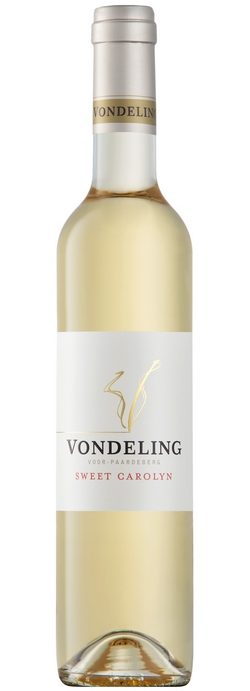 (100% Muscat de Frontignan) VINEYARDS This wine is made from a single vineyard of Muscat d’Frontignan. The winemaking begins in the vineyard. When the acidity and sugar are in perfect harmony, the stem of each bunch is individually crimped to isolate the bunch from the vine. The crimping process stops the supply of water to the bunch, causing the berries to desiccate on the vine. Crimping is done before the grapes are 100% ripe and still high in natural acidity. The crimping process concentrates the sugar and the acidity of the berries and takes up to two weeks. The grapes are naturally protected from the sun by the vine canopy and air movement across the berries stops moulds and fungi from forming while they are drying. Finally, the fruit is ready for picking. VINIFICATION The dried grapes are hand-picked and chilled overnight. They are then destemmed, but not crushed, directly to open top fermenters. Here the berries are fermented much like a red wine, with periodic punch downs, to extract all the syrupy juice from inside. This method adds structure to the wine and the light tannins help to preserve fruity freshness. After approximately one week on the skins, they are pressed, and fermentation is completed in tank. Fermentation stops naturally when the combination of high acidity, increasing alcohol and concentrated sugar finally becomes too inhibitory for the yeast. The wine is aged for 11 months on the gross lees before it is bottled. TASTING NOTES & CELLARING & FOOD PAIRING The wine displays a golden to light amber colour. It has a perfumed nose of bright pineapple, ripe apricot, honeyed marmalade and seductive rose petal. These heady aromas are supported by orange blossom, jasmine and wild rosemary. The nose carries through to the taste, where the mouth-watering sweetness is cut by a tangy acidity, which ensures a persistent and refreshing finish. This is a naturally fermented and unfortified wine, and allows for many delightful treats, which may incl. savoury duck liver pate, sweet spice-laced puddings and traditional soft cheeses. Serve chilled and don’t wait for dessert. Accolades 2022 Platter’s Guide – 4.5 Stars
(100% Muscat de Frontignan) VINEYARDS This wine is made from a single vineyard of Muscat d’Frontignan. The winemaking begins in the vineyard. When the acidity and sugar are in perfect harmony, the stem of each bunch is individually crimped to isolate the bunch from the vine. The crimping process stops the supply of water to the bunch, causing the berries to desiccate on the vine. Crimping is done before the grapes are 100% ripe and still high in natural acidity. The crimping process concentrates the sugar and the acidity of the berries and takes up to two weeks. The grapes are naturally protected from the sun by the vine canopy and air movement across the berries stops moulds and fungi from forming while they are drying. Finally, the fruit is ready for picking. VINIFICATION The dried grapes are hand-picked and chilled overnight. They are then destemmed, but not crushed, directly to open top fermenters. Here the berries are fermented much like a red wine, with periodic punch downs, to extract all the syrupy juice from inside. This method adds structure to the wine and the light tannins help to preserve fruity freshness. After approximately one week on the skins, they are pressed, and fermentation is completed in tank. Fermentation stops naturally when the combination of high acidity, increasing alcohol and concentrated sugar finally becomes too inhibitory for the yeast. The wine is aged for 11 months on the gross lees before it is bottled. TASTING NOTES & CELLARING & FOOD PAIRING The wine displays a golden to light amber colour. It has a perfumed nose of bright pineapple, ripe apricot, honeyed marmalade and seductive rose petal. These heady aromas are supported by orange blossom, jasmine and wild rosemary. The nose carries through to the taste, where the mouth-watering sweetness is cut by a tangy acidity, which ensures a persistent and refreshing finish. This is a naturally fermented and unfortified wine, and allows for many delightful treats, which may incl. savoury duck liver pate, sweet spice-laced puddings and traditional soft cheeses. Serve chilled and don’t wait for dessert. Accolades 2022 Platter’s Guide – 4.5 Stars2017 Vintage:
2020 Platter’s Guide – 4.5 Stars 2018 James Suckling SA Report 90 points
Analysis pH 3.38 Total Acidity 6.4 g/l Residual Sugar 177.6 g/l Alcohol 12.38 % Download Tasting Sheet -
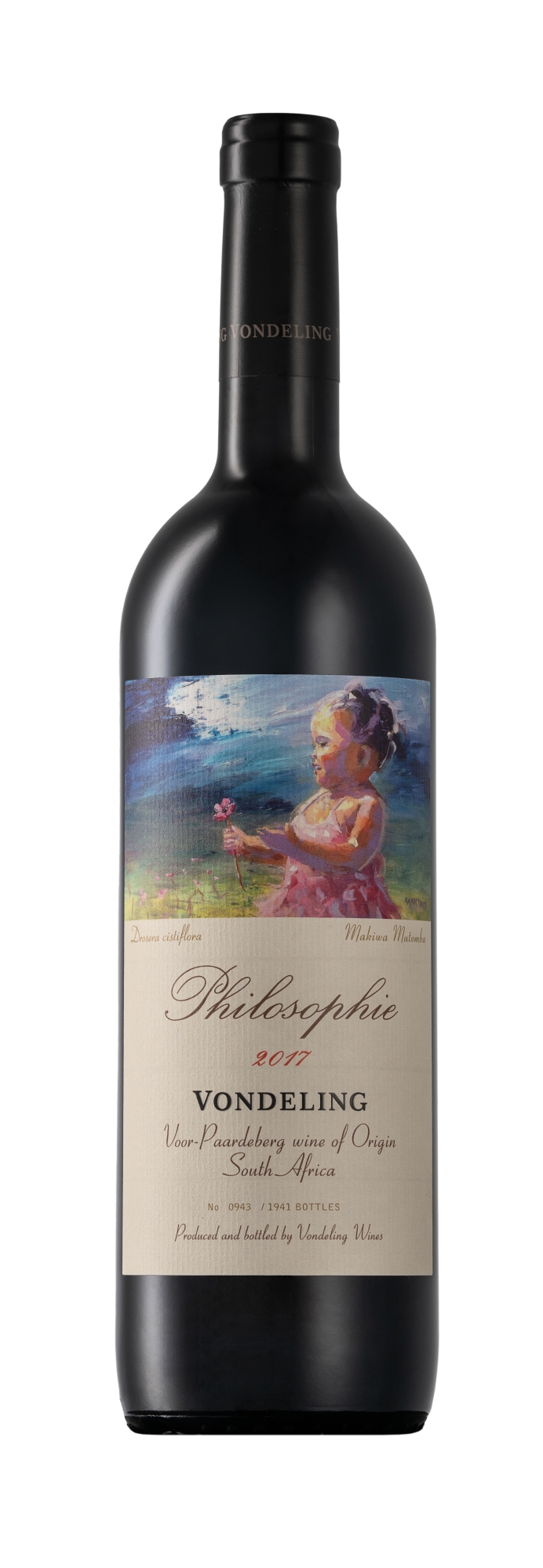 LIMITED RELEASE Philosophie is a brave endeavour in which we attempt to marry the mind, the heart and the soil as we celebrate the diversity of Vondeling. THE STORY BEHIND THE LABEL Each year a celebrated artist is recruited to illustrate a rare Paardeberg flower in the medium of their choice. This unique rendition is placed on a numbered selection of Vondeling’s finest bottles to create a series of collectable and rare wines. Drosera cistiflora is a perennial, carnivorous flower uniquely occurring in its red form in our region. Beautifully rendered in oil on canvas by the inspirational talent of Makiwa Mutomba, adding a sense of place and delight to this endearing wine. VINEYARDS In a handful of specific vineyards, we explore the absolute limits of quality with no consideration to cost. 2017 is a unique vintage with Cabernet Sauvignon as the dominant grape. Each vineyard is carefully assessed at the end of the growing season and attentively pruned during the winter. At bud burst, any shoots which develop poorly are immediately removed. This ensures that the remaining shoots have plenty of energy to grow sturdy, fertile flowers and facilitate a uniform berry set. As the grapes develop only one bunch per cane is selected and the rest are dropped to the ground. This lowers the load on the vine, removing any plant stress and allowing perfect flavour and tannin development. It also diminishes any need for irrigation and helps preserve the grape’s natural acidity. VINIFICATION Once deemed to have reached optimal ripeness the grapes are hand-picked and refrigerated for 24hrs. The bunches are carefully destemmed, but not crushed and the berries are individually sorted to remove any green material. The berries are not pumped, but ferried, via conveyor to open-top fermenters. Cold soaking is done at 6 degrees Celsius for a period of 5 days. Cold soaking is a process that allows only partial degradation of the grape cell wall, to gently extract the fruit flavours and aromatics situated below the surface of the skin. Subtle tannin extraction protects these delicate flavours and promotes colour stability. As the berries slowly come to room temperature, ambient yeasts commence with spontaneous fermentation. This natural fermentation by multiple yeast strains, is preferable, as it will ensure that the wine has complexity and character. A cool fermentation temperature slows the rate of fermentation and affords the winemaker adequate time to assess and manipulate the character of the wine, thus unlocking its full potential. Full extraction is ensured by regular punch downs after three weeks of maceration the skins are gently pressed in a traditional basket press. From the press, the wine moves directly to 300L French Oak barrels for malolactic fermentation. This slow bacterial degradation of the wine’s harsher acidity has the welcome side effect of meshing the oak and natural fruit flavours into a seamless package. Two-thirds of the barrels are new. The wine remains on its yeast and malolactic lees for 14 months before the best 10 barrels are selected, blended and returned for an additional 8 months of maturation. Of these 10 barrels, only 5 are selected for the final blend. The wine is bottled after 3 months in tank and bottle matured for at least two years before release. TASTING NOTES & CELLARING & FOOD PAIRING A deep but vibrant, scarlet red colour. A wonderfully expressive and enthusiastic nose. Bursting with bright red cherry and high floral notes. Beautifully laced with sweet vanilla and subtle wood shavings. The palate is precise and bold with delightful tension. Ripe raspberry and cinnamon lead with underlying layers of trimmed cigar and fine tannin. Pairs well with steak, especially richer steak dishes such as tournedos Rossini, posh burgers and Roast duck. Accolades 2017 Vintage: 2021 Tim Atkin - 89 Points 2016 Vintage: 2022 Platter's Guide - 4.5 Stars (94pts) 2015 Vintage: 2018 Platter’s Guide – 4.5 Stars 2020 Platter’s Guide – 4.5 Stars 2020 Tim Atkin 93 Points 2020 Winemag – 92 points 2020 Veritas – Silver Outstanding 2021 Platter’s Guide – 4.5 stars (94 pts) Analysis pH 3.6 Total Acidity 6.4 g/l Residual Sugar 3.4 g/l Alcohol 14.3 % Download Tasting Sheet
LIMITED RELEASE Philosophie is a brave endeavour in which we attempt to marry the mind, the heart and the soil as we celebrate the diversity of Vondeling. THE STORY BEHIND THE LABEL Each year a celebrated artist is recruited to illustrate a rare Paardeberg flower in the medium of their choice. This unique rendition is placed on a numbered selection of Vondeling’s finest bottles to create a series of collectable and rare wines. Drosera cistiflora is a perennial, carnivorous flower uniquely occurring in its red form in our region. Beautifully rendered in oil on canvas by the inspirational talent of Makiwa Mutomba, adding a sense of place and delight to this endearing wine. VINEYARDS In a handful of specific vineyards, we explore the absolute limits of quality with no consideration to cost. 2017 is a unique vintage with Cabernet Sauvignon as the dominant grape. Each vineyard is carefully assessed at the end of the growing season and attentively pruned during the winter. At bud burst, any shoots which develop poorly are immediately removed. This ensures that the remaining shoots have plenty of energy to grow sturdy, fertile flowers and facilitate a uniform berry set. As the grapes develop only one bunch per cane is selected and the rest are dropped to the ground. This lowers the load on the vine, removing any plant stress and allowing perfect flavour and tannin development. It also diminishes any need for irrigation and helps preserve the grape’s natural acidity. VINIFICATION Once deemed to have reached optimal ripeness the grapes are hand-picked and refrigerated for 24hrs. The bunches are carefully destemmed, but not crushed and the berries are individually sorted to remove any green material. The berries are not pumped, but ferried, via conveyor to open-top fermenters. Cold soaking is done at 6 degrees Celsius for a period of 5 days. Cold soaking is a process that allows only partial degradation of the grape cell wall, to gently extract the fruit flavours and aromatics situated below the surface of the skin. Subtle tannin extraction protects these delicate flavours and promotes colour stability. As the berries slowly come to room temperature, ambient yeasts commence with spontaneous fermentation. This natural fermentation by multiple yeast strains, is preferable, as it will ensure that the wine has complexity and character. A cool fermentation temperature slows the rate of fermentation and affords the winemaker adequate time to assess and manipulate the character of the wine, thus unlocking its full potential. Full extraction is ensured by regular punch downs after three weeks of maceration the skins are gently pressed in a traditional basket press. From the press, the wine moves directly to 300L French Oak barrels for malolactic fermentation. This slow bacterial degradation of the wine’s harsher acidity has the welcome side effect of meshing the oak and natural fruit flavours into a seamless package. Two-thirds of the barrels are new. The wine remains on its yeast and malolactic lees for 14 months before the best 10 barrels are selected, blended and returned for an additional 8 months of maturation. Of these 10 barrels, only 5 are selected for the final blend. The wine is bottled after 3 months in tank and bottle matured for at least two years before release. TASTING NOTES & CELLARING & FOOD PAIRING A deep but vibrant, scarlet red colour. A wonderfully expressive and enthusiastic nose. Bursting with bright red cherry and high floral notes. Beautifully laced with sweet vanilla and subtle wood shavings. The palate is precise and bold with delightful tension. Ripe raspberry and cinnamon lead with underlying layers of trimmed cigar and fine tannin. Pairs well with steak, especially richer steak dishes such as tournedos Rossini, posh burgers and Roast duck. Accolades 2017 Vintage: 2021 Tim Atkin - 89 Points 2016 Vintage: 2022 Platter's Guide - 4.5 Stars (94pts) 2015 Vintage: 2018 Platter’s Guide – 4.5 Stars 2020 Platter’s Guide – 4.5 Stars 2020 Tim Atkin 93 Points 2020 Winemag – 92 points 2020 Veritas – Silver Outstanding 2021 Platter’s Guide – 4.5 stars (94 pts) Analysis pH 3.6 Total Acidity 6.4 g/l Residual Sugar 3.4 g/l Alcohol 14.3 % Download Tasting Sheet -
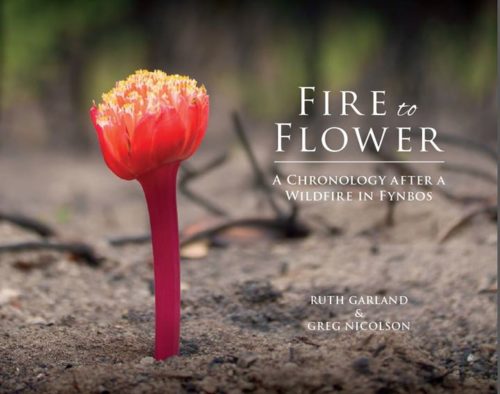 This publication materialised following a fire on the Paardeberg, which burnt 75% of the mountain above the farmlands. Being the first fire in 25 years, it offered an unmatched opportunity to document and observe the emergent plant species as they germinated and flowered. Sponsored by Anthony Ward, of Vondeling Wine Estate, botanist and photographer Greg Nicolson recorded and archived images and specimens over 18 months, in consultation with the Compton Herbarium. He collected over 1000 species, including one species new to science, and a number of new distribution records. Walking the mountain for over 18 months, gave Greg a broad view of animal, bird and insect inhabitants of the Paardeberg that have been included among the flowers. Ruth Garland was invited to write text to the publication, which is designed to highlight an appreciation of the diversity and beauty of this part of the matchless Cape Floral Kingdom. This book is primarily to give pleasure to those who love the natural world while also providing an opportunity to learn more about a spectacular part of it, so that it is treasured and adequately protected for generations to come.
This publication materialised following a fire on the Paardeberg, which burnt 75% of the mountain above the farmlands. Being the first fire in 25 years, it offered an unmatched opportunity to document and observe the emergent plant species as they germinated and flowered. Sponsored by Anthony Ward, of Vondeling Wine Estate, botanist and photographer Greg Nicolson recorded and archived images and specimens over 18 months, in consultation with the Compton Herbarium. He collected over 1000 species, including one species new to science, and a number of new distribution records. Walking the mountain for over 18 months, gave Greg a broad view of animal, bird and insect inhabitants of the Paardeberg that have been included among the flowers. Ruth Garland was invited to write text to the publication, which is designed to highlight an appreciation of the diversity and beauty of this part of the matchless Cape Floral Kingdom. This book is primarily to give pleasure to those who love the natural world while also providing an opportunity to learn more about a spectacular part of it, so that it is treasured and adequately protected for generations to come. -
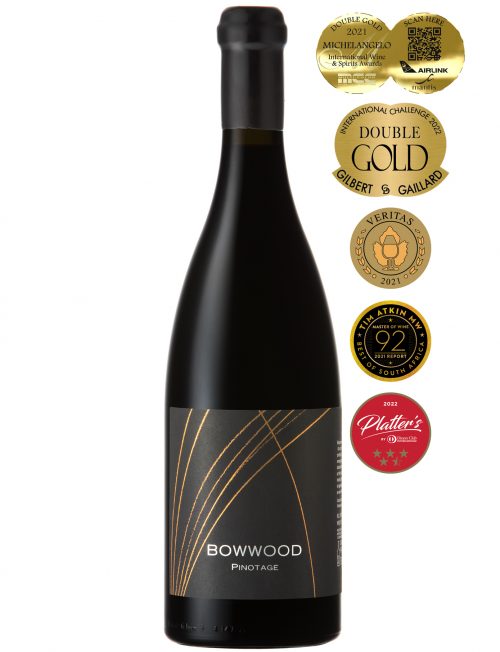 (100% Pinotage) VINEYARDS Bowwood Pinotage is made from a small, single vineyard, planted in clay-rich gravel soils in 1998. The vineyard is shy bearing with poor vigour, which ensures tiny berries with hugely concentrated flavour. A North-South row orientation exposes the grapes to plenty of gentle morning and late afternoon sunshine, perfect for intense colour and aromatic development. VINIFICATION The grapes are hand-picked in early February with a ripeness of 25 Balling. Each bunch is pre-chilled before being destemmed and berry sorted. The berries are not crushed but are fermented whole. This allows for a gradual extraction of tannins and colour, which promotes finesse, balance and longevity. The berries are fermented in open-top fermenters, which provide easy access for the winemaker to assess and manipulate the fermentation. The wine is punched down regularly for 8 days and then basket pressed directly to new and second fill, 300L American oak barrels. Malolactic fermentation takes place in the barrel, which promotes harmony and seamless integration of the oak flavours. The wine is further matured on the yeast and malolactic lees for 18 months. At this point, the finest 12 barrels are selected, blended and returned to barrel for an additional 6 months. Finally, the wine is kept for 4 months in a stainless steel tank to promote stability and clarification, before it is bottled and laid to rest for a full year before it is released. FURTHER REMARKS Bowwood Pinotage is made to rival the best wines in the world and will benefit greatly from additional cellaring. This is only the fifth vintage. TASTING NOTES & CELLARING & FOOD PAIRING Opaque in colour with dark hues of purple and red, it delivers an intense black cherry and plum bouquet interlaced with sweet cloves and vanillarich oak. Bold fruit and pungent spice aromatics persist on the palate with undertones of roasted almonds and cigar smoke. The palate is broad and rich with soft acidity and abundant, fine tannin. A luxurious, full-flavored, and modern wine. Accolades Vintage 2018: 2021 Michelangelo – Double Gold 2021 Veritas – Gold 2022 Platter’s Guide – 4.5 Stars (94pts) 2022 Gilbert & Gaillard -Double Gold (92pts) Vintage 2019: 2022 ABSA TOP 10 Winner 2022 Veritas- Double Gold Analysis pH 3.58 Total Acidity 5.7 g/l Residual Sugar 2.0 g/l Alcohol 14.21% Download Tasting Sheet
(100% Pinotage) VINEYARDS Bowwood Pinotage is made from a small, single vineyard, planted in clay-rich gravel soils in 1998. The vineyard is shy bearing with poor vigour, which ensures tiny berries with hugely concentrated flavour. A North-South row orientation exposes the grapes to plenty of gentle morning and late afternoon sunshine, perfect for intense colour and aromatic development. VINIFICATION The grapes are hand-picked in early February with a ripeness of 25 Balling. Each bunch is pre-chilled before being destemmed and berry sorted. The berries are not crushed but are fermented whole. This allows for a gradual extraction of tannins and colour, which promotes finesse, balance and longevity. The berries are fermented in open-top fermenters, which provide easy access for the winemaker to assess and manipulate the fermentation. The wine is punched down regularly for 8 days and then basket pressed directly to new and second fill, 300L American oak barrels. Malolactic fermentation takes place in the barrel, which promotes harmony and seamless integration of the oak flavours. The wine is further matured on the yeast and malolactic lees for 18 months. At this point, the finest 12 barrels are selected, blended and returned to barrel for an additional 6 months. Finally, the wine is kept for 4 months in a stainless steel tank to promote stability and clarification, before it is bottled and laid to rest for a full year before it is released. FURTHER REMARKS Bowwood Pinotage is made to rival the best wines in the world and will benefit greatly from additional cellaring. This is only the fifth vintage. TASTING NOTES & CELLARING & FOOD PAIRING Opaque in colour with dark hues of purple and red, it delivers an intense black cherry and plum bouquet interlaced with sweet cloves and vanillarich oak. Bold fruit and pungent spice aromatics persist on the palate with undertones of roasted almonds and cigar smoke. The palate is broad and rich with soft acidity and abundant, fine tannin. A luxurious, full-flavored, and modern wine. Accolades Vintage 2018: 2021 Michelangelo – Double Gold 2021 Veritas – Gold 2022 Platter’s Guide – 4.5 Stars (94pts) 2022 Gilbert & Gaillard -Double Gold (92pts) Vintage 2019: 2022 ABSA TOP 10 Winner 2022 Veritas- Double Gold Analysis pH 3.58 Total Acidity 5.7 g/l Residual Sugar 2.0 g/l Alcohol 14.21% Download Tasting Sheet -
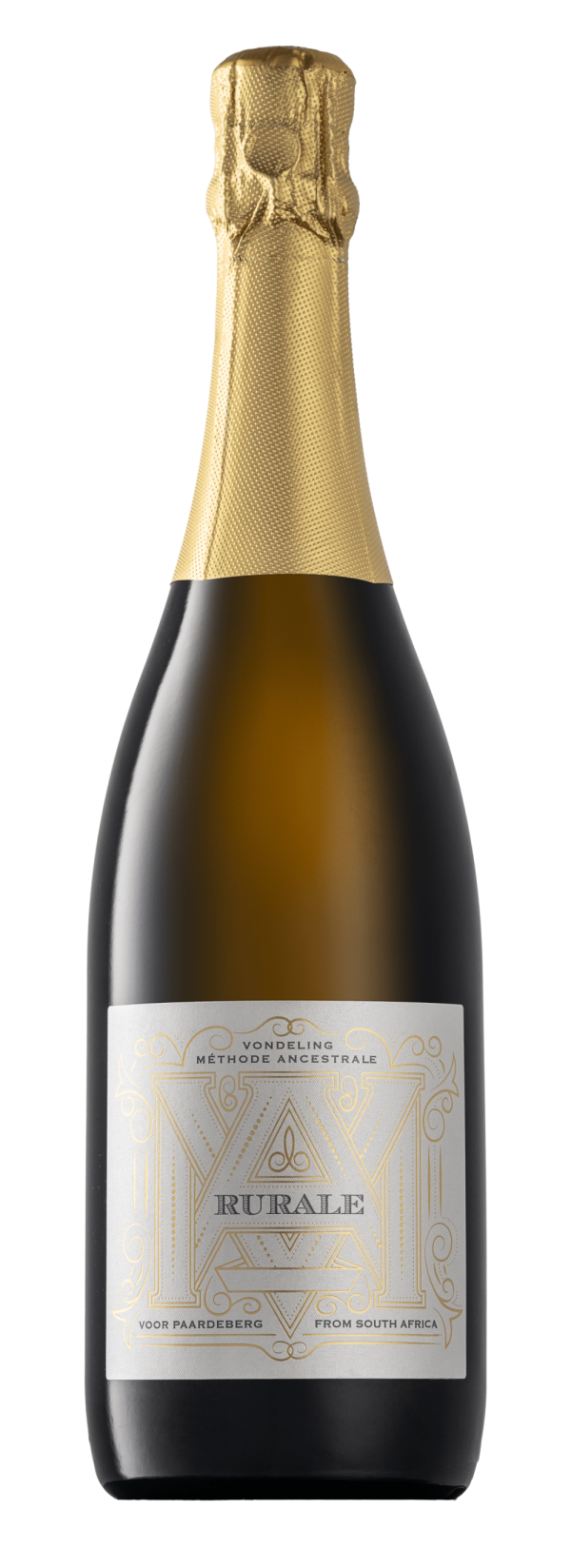 (80% Chardonnay & 20% Pinotage) VINEYARDS Vondeling Rurale is comprised of 80% Chardonnay and 20% Pinotage. The Chardonnay grapes originate from a single block, located on a south-west facing slope on the decomposed granite soils of the Paardeberg Mountain. The Pinotage grapes are grown on our lower valley slopes in soils comprised of gravel and clay. Typically, the Pinotage grapes add weight and texture. Unlike Mèthode Cap Classique, Mèthode Ancestrale grapes are harvested with a potential alcohol of 12% (rather than 9%). This promotes a fuller, more rounded pallet with superior fruit expression without compromising on natural vibrancy and freshness. VINIFICATION Natural fermentation begins in a stainless-steel tank and when only a small, but critical amount of sugar remains, the fermenting wine is bottled and capped. Bottling must be done at the precise moment when there is enough remaining sugar to create a healthy, vibrant mousse, but not so much as to cause the bottles to explode. This single, continuous fermentation, using fruit which is approximately three weeks riper than the base wine used to make Mèthode Cap Classique, is what makes Mèthode Ancestrale unique. The wine is matured on its lees for 3 years before riddling and disgorging. Autolysis of the yeast cells increases the richness, palate weight, and creaminess to the wine. After being hand-riddled over a one-month period, it is disgorged and topped using our flagship white blend, Babiana from the2013 vintage, as an alternative to liqueur d’expedition. The name Rurale is the original name for what was later recognized by the French A.O.C as Mèthode Ancestrale. We love the implication that this is an uncomplicated, yet pure expression of both the grape and its origins. Rurale was the first recognized Mèthode Ancestrale to be produced in South Africa and remains the leader in this category. Vondeling was instrumental in drafting the technical description, which allowed this new category to be recognized in 2014. It is a highly labor-intensive way to produce sparkling wine, and for this reason, only 3300 bottles were produced. All grapes are grown and vinified on Vondeling Farm and Cellar. TASTING NOTES & CELLARING & FOOD PAIRING The wine displays a pale straw colour typical of bubbly that has enjoyed the benefits of extended lees maturation. Tiny, pearl-string bubbles and fine mousse abound. Beautiful aromas of lavender honey, lime, crisp apple with freshly baked pastry and toasted almonds on the nose. The palate is bright and zippy with vibrant acidity and a soft, creamy mouthfeel. Fresh apple appears again along with pears, confected lemon and a long, rich, lingering aftertaste. Rurale can be paired with smoked salmon, fennel-roasted trout or fresh oysters with a squeeze of lemon, salt, and pepper. Accolades: 2018 Vintage: 2021 SA Sparkling Wine Championships – Double Gold 2021 Michelangelo- Gold 2022 Platter Wine Guide 2020 – 4,5 stars (93pts) Analysis: pH 3.42 Total Acidity 7.6 g/l Residual Sugar 5.9 g/l Alcohol 13.02 % Download Tasting Sheet
(80% Chardonnay & 20% Pinotage) VINEYARDS Vondeling Rurale is comprised of 80% Chardonnay and 20% Pinotage. The Chardonnay grapes originate from a single block, located on a south-west facing slope on the decomposed granite soils of the Paardeberg Mountain. The Pinotage grapes are grown on our lower valley slopes in soils comprised of gravel and clay. Typically, the Pinotage grapes add weight and texture. Unlike Mèthode Cap Classique, Mèthode Ancestrale grapes are harvested with a potential alcohol of 12% (rather than 9%). This promotes a fuller, more rounded pallet with superior fruit expression without compromising on natural vibrancy and freshness. VINIFICATION Natural fermentation begins in a stainless-steel tank and when only a small, but critical amount of sugar remains, the fermenting wine is bottled and capped. Bottling must be done at the precise moment when there is enough remaining sugar to create a healthy, vibrant mousse, but not so much as to cause the bottles to explode. This single, continuous fermentation, using fruit which is approximately three weeks riper than the base wine used to make Mèthode Cap Classique, is what makes Mèthode Ancestrale unique. The wine is matured on its lees for 3 years before riddling and disgorging. Autolysis of the yeast cells increases the richness, palate weight, and creaminess to the wine. After being hand-riddled over a one-month period, it is disgorged and topped using our flagship white blend, Babiana from the2013 vintage, as an alternative to liqueur d’expedition. The name Rurale is the original name for what was later recognized by the French A.O.C as Mèthode Ancestrale. We love the implication that this is an uncomplicated, yet pure expression of both the grape and its origins. Rurale was the first recognized Mèthode Ancestrale to be produced in South Africa and remains the leader in this category. Vondeling was instrumental in drafting the technical description, which allowed this new category to be recognized in 2014. It is a highly labor-intensive way to produce sparkling wine, and for this reason, only 3300 bottles were produced. All grapes are grown and vinified on Vondeling Farm and Cellar. TASTING NOTES & CELLARING & FOOD PAIRING The wine displays a pale straw colour typical of bubbly that has enjoyed the benefits of extended lees maturation. Tiny, pearl-string bubbles and fine mousse abound. Beautiful aromas of lavender honey, lime, crisp apple with freshly baked pastry and toasted almonds on the nose. The palate is bright and zippy with vibrant acidity and a soft, creamy mouthfeel. Fresh apple appears again along with pears, confected lemon and a long, rich, lingering aftertaste. Rurale can be paired with smoked salmon, fennel-roasted trout or fresh oysters with a squeeze of lemon, salt, and pepper. Accolades: 2018 Vintage: 2021 SA Sparkling Wine Championships – Double Gold 2021 Michelangelo- Gold 2022 Platter Wine Guide 2020 – 4,5 stars (93pts) Analysis: pH 3.42 Total Acidity 7.6 g/l Residual Sugar 5.9 g/l Alcohol 13.02 % Download Tasting Sheet -
 VINEYARDS Made primarily from cold-pressed Merlot, the anchor vineyard for this delicious wine is over 20yrs old. Located on a granite spur in the foothills of the Paardeberg Mountain, the berries are well exposed to sunlight. Exposure to sunlight is essential to eliminate green flavours from the fruit. The soil has a high clay percentage, and this lends softness and volume to the wine. Great care is taken to ensure that the vines do not bear too great a crop or suffer from drought. This is done through green cropping of the vines and micro-irrigation. Both practices help to preserve the natural acidity, freshness and vibrancy of the grape aromas VINIFICATION Grapes are picked at optimum ripeness in the early hours of the morning before being destemmed and chilled before pressing. This short route, from vine to press, ensures minimal degradation of the fruit aromas and a very moderate extraction of colour. All free-run juice is kept separate from the colour fraction to ensure a deliciously subtle salmon colour. The juice is cold settled to remove any coarseness and fermentation is done in stainless steel tanks. The wine is 100% unoaked. A six-month period of maturation on the yeast lees promotes richness and complexity. TASTING NOTES & CELLARING & FOOD PAIRING The wine has a delightfully delicate, salmon pink colour. It displays a bright bouquet of Turkish delight, raspberry coulis, passion fruit, and taught grapefruit. The palate is well rounded but refreshingly vibrant, packed with red berry flavours, seductive floral undertones, and a pleasant citrus twist. Pair with spicy Thai prawns, grilled Portuguese sardines, or a fresh tomato, feta and pomegranate salad. Accolades 2023 Platter’s Guide-3.5 stars (85Pts) 2023 Vintage: 2023 Gold Wine Awards-Gold 2023 Vitis Vinifera - Gold 2022 Vintage: 2022 Michelangelo - Gold 2022 Gilbert Gaillard -Gold 2021 Vintage: 2021 Michelangelo - Gold 2021 Vitis Vinifera - Gold 2021 Rose Rocks - Gold 2020 Vintage: 2020 Rose Rocks - Gold 2020 Vitis Vinifera Awards - Gold Analysis pH 3.52 Total Acidity 5.8 g/l Residual Sugar 3.1 g/l Alcohol 12.74 % Download Tasting Sheet
VINEYARDS Made primarily from cold-pressed Merlot, the anchor vineyard for this delicious wine is over 20yrs old. Located on a granite spur in the foothills of the Paardeberg Mountain, the berries are well exposed to sunlight. Exposure to sunlight is essential to eliminate green flavours from the fruit. The soil has a high clay percentage, and this lends softness and volume to the wine. Great care is taken to ensure that the vines do not bear too great a crop or suffer from drought. This is done through green cropping of the vines and micro-irrigation. Both practices help to preserve the natural acidity, freshness and vibrancy of the grape aromas VINIFICATION Grapes are picked at optimum ripeness in the early hours of the morning before being destemmed and chilled before pressing. This short route, from vine to press, ensures minimal degradation of the fruit aromas and a very moderate extraction of colour. All free-run juice is kept separate from the colour fraction to ensure a deliciously subtle salmon colour. The juice is cold settled to remove any coarseness and fermentation is done in stainless steel tanks. The wine is 100% unoaked. A six-month period of maturation on the yeast lees promotes richness and complexity. TASTING NOTES & CELLARING & FOOD PAIRING The wine has a delightfully delicate, salmon pink colour. It displays a bright bouquet of Turkish delight, raspberry coulis, passion fruit, and taught grapefruit. The palate is well rounded but refreshingly vibrant, packed with red berry flavours, seductive floral undertones, and a pleasant citrus twist. Pair with spicy Thai prawns, grilled Portuguese sardines, or a fresh tomato, feta and pomegranate salad. Accolades 2023 Platter’s Guide-3.5 stars (85Pts) 2023 Vintage: 2023 Gold Wine Awards-Gold 2023 Vitis Vinifera - Gold 2022 Vintage: 2022 Michelangelo - Gold 2022 Gilbert Gaillard -Gold 2021 Vintage: 2021 Michelangelo - Gold 2021 Vitis Vinifera - Gold 2021 Rose Rocks - Gold 2020 Vintage: 2020 Rose Rocks - Gold 2020 Vitis Vinifera Awards - Gold Analysis pH 3.52 Total Acidity 5.8 g/l Residual Sugar 3.1 g/l Alcohol 12.74 % Download Tasting Sheet -
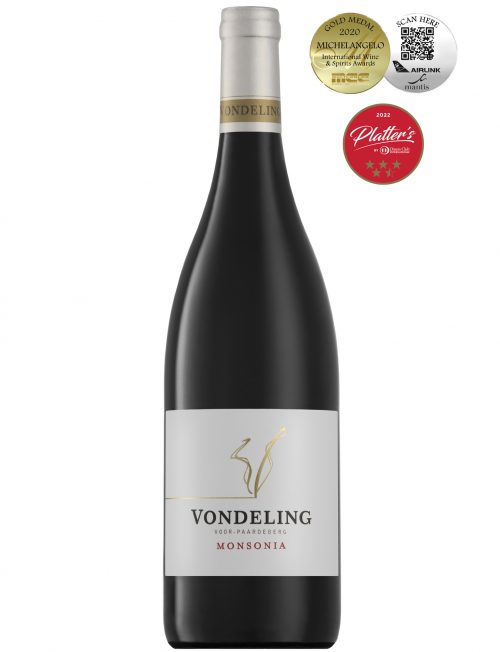 (Shiraz 60%, Mourvédre 23%, Carignan 10% & Grenache Noir 7%) Vondeling Monsonia is named after Monsonia Speciosa, a very rare species of fynbos (vegetation type occurring in the Western Cape region of South Africa) found in the Paardeberg mountain, the home of Vondeling wines. THE NAME MONSONIA The flower was named after Lady Anne Monson, the great-grandchild of King Charles II. Controversially, her first marriage was dissolved, due to the birth of an illegitimate child but she soon remarried Colonel George Monson of the Indian Military. She was known as a “remarkable lady botanist” and was instrumental in translating Linnaeus’s famous “Philosophia Botanica”. On her way to Calcutta, she visited the Cape of Good Hope and accompanied seasoned collector of South African plants, Carl Peter Thunberg, on several expeditions around the Cape. In 1774, he named the Monsonia species of plants after her. VINEYARDS The Shiraz vines grow in ancient, well-weathered granite soils on southeast-facing slopes – ideal for our warm South African climate. In total, six clones of Shiraz can be found on the farm and only the best performing clones go into the final blend. Typically, each clone contributes different characteristics to the wine and the different blocks are picked at varying degrees of ripeness, best suited to their character. The Mourvedre, Carignan, and Grenache are best adapted to hot sun and are grown as bush vines on North East-facing slopes. Highly selective hand-picking guarantees that only the best fruit arrives at the winery. VINIFICATION After being chilled overnight, bunches are partially destemmed, but not crushed, and whole berry fermentation takes place in open-top fermentation tanks. An initial two-day period of cold soaking is applied before wild yeast fermentation is allowed to commence. During fermentation, hand plunging, commonly known as "punch downs" is the method of mixing and extraction. After fermentation, the wine is pressed in a traditional boutique-size basket press. All wine is then transferred directly to barrel where malolactic fermentation takes place. Only large format French oak barrels are used, with about one-third new and the rest 2nd and 3rd fill. The wine is allowed to mature for 16 months before a final barrel selection, blending and bottling takes place TASTING NOTES & CELLARING & FOOD PAIRING Vibrant and clear charcoal red with beautifully viscous legs clinging to the glass. Each grape component vies for attention in this kaleidoscopic bouquet. Sweet Lillies and rose-petal Turkish delight from the Grenache. Plush black currant and blueberries from the Carignan. All wrapped in a velvety blanket of red berries and soft spice from the Shiraz. A smooth, velvety palate devoid of harsh or grippy tannin. Red cherry candy and sweet plumb at the fore with a soft plush center and subtle spice with roasted coconut at the end. Well paired with a mature steak, barbequed over a hotbed of coals and served with sauteed baby mushrooms, or try a hearty, slow-cooked pork belly with root vegetables and tomatoes. Accolades 2016 Vinatge:
(Shiraz 60%, Mourvédre 23%, Carignan 10% & Grenache Noir 7%) Vondeling Monsonia is named after Monsonia Speciosa, a very rare species of fynbos (vegetation type occurring in the Western Cape region of South Africa) found in the Paardeberg mountain, the home of Vondeling wines. THE NAME MONSONIA The flower was named after Lady Anne Monson, the great-grandchild of King Charles II. Controversially, her first marriage was dissolved, due to the birth of an illegitimate child but she soon remarried Colonel George Monson of the Indian Military. She was known as a “remarkable lady botanist” and was instrumental in translating Linnaeus’s famous “Philosophia Botanica”. On her way to Calcutta, she visited the Cape of Good Hope and accompanied seasoned collector of South African plants, Carl Peter Thunberg, on several expeditions around the Cape. In 1774, he named the Monsonia species of plants after her. VINEYARDS The Shiraz vines grow in ancient, well-weathered granite soils on southeast-facing slopes – ideal for our warm South African climate. In total, six clones of Shiraz can be found on the farm and only the best performing clones go into the final blend. Typically, each clone contributes different characteristics to the wine and the different blocks are picked at varying degrees of ripeness, best suited to their character. The Mourvedre, Carignan, and Grenache are best adapted to hot sun and are grown as bush vines on North East-facing slopes. Highly selective hand-picking guarantees that only the best fruit arrives at the winery. VINIFICATION After being chilled overnight, bunches are partially destemmed, but not crushed, and whole berry fermentation takes place in open-top fermentation tanks. An initial two-day period of cold soaking is applied before wild yeast fermentation is allowed to commence. During fermentation, hand plunging, commonly known as "punch downs" is the method of mixing and extraction. After fermentation, the wine is pressed in a traditional boutique-size basket press. All wine is then transferred directly to barrel where malolactic fermentation takes place. Only large format French oak barrels are used, with about one-third new and the rest 2nd and 3rd fill. The wine is allowed to mature for 16 months before a final barrel selection, blending and bottling takes place TASTING NOTES & CELLARING & FOOD PAIRING Vibrant and clear charcoal red with beautifully viscous legs clinging to the glass. Each grape component vies for attention in this kaleidoscopic bouquet. Sweet Lillies and rose-petal Turkish delight from the Grenache. Plush black currant and blueberries from the Carignan. All wrapped in a velvety blanket of red berries and soft spice from the Shiraz. A smooth, velvety palate devoid of harsh or grippy tannin. Red cherry candy and sweet plumb at the fore with a soft plush center and subtle spice with roasted coconut at the end. Well paired with a mature steak, barbequed over a hotbed of coals and served with sauteed baby mushrooms, or try a hearty, slow-cooked pork belly with root vegetables and tomatoes. Accolades 2016 Vinatge:2020 Platter’s Guide – 4.5 Stars 2019 Michelangelo – Gold 2019 Winemag - 93pts
2018 Vintage:2021 Platter’s Guide – 4.5 Stars / 94 Points 2020 Michelangelo - Gold 2022 Tim Atkin 90 Pts 2022 Michelangelo Awards - Gold 2023 Platter’s Guide 4,5 Stars (92 Pts)
2019 Vintage: 2024 Platter’s Guide 4.5 Stars (92 Pts) Analysis pH 3.50 Total Acidity 5.3 g/l Residual Sugar 3.3 g/l Alcohol 13.72 % Download Tasting Sheet -
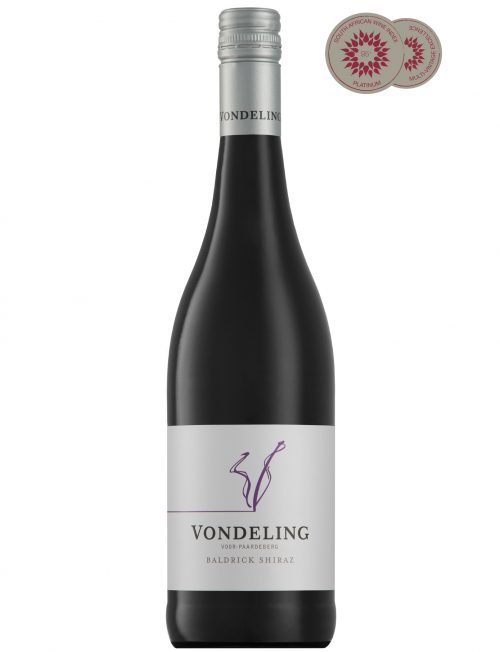 (100% Shiraz) VINEYARDS For this delicious wine, we select the sites and clones which promote greater aromatics and a more accessible palate. The vineyards are planted on ancient, granite derived soils on south and south east facing slopes. In total six clones of Shiraz are used, and each clone enriches the complexity of the final wine. VINIFICATION All grapes are hand selected and chilled overnight before being partially destemmed and placed as whole berries in open-top fermenters. The berry mash is cold soaked for 48hrs, before fermenting spontaneously. Fermentation takes place at a cool 22°C. All fermentation is done by wild yeasts. During fermentation, the wine is mixed by hand and not by pump. This method facilitates greater control and expression of the wine. Once fermentation is complete the skins are pressed in a traditional basket press and the wine is transferred to 500L second and third fill French oak barrels. Malolactic fermentation occurs in the barrel and helps to soften and enhance the natural wine flavours. The wine will spend more than a year in barrel to improved maturity and expose more flavours. TASTING NOTES & CELLARING & FOOD PAIRING The wine a deep purple colour with flashes of scarlet. The ripe plum and mulberry aromas are uplifted with cherry blossom and violets, while infused with subtle cinnamon and aromatic white pepper. The palate is gentle and the tannins fresh but rounded. The aromatics continue into the palate with added blueberry, a hint of roasted black olives and soft-spoken sweet spice. A versatile, vibrant medium-bodied wine, the Baldrick Shiraz will enhance many a dish and occasion. We recommend it with slow cooked lamb, freshly seared steak and mashed potato with caramelised onion gravy. You could even have it with turnip…?! Accolades 2018 Vintage:
(100% Shiraz) VINEYARDS For this delicious wine, we select the sites and clones which promote greater aromatics and a more accessible palate. The vineyards are planted on ancient, granite derived soils on south and south east facing slopes. In total six clones of Shiraz are used, and each clone enriches the complexity of the final wine. VINIFICATION All grapes are hand selected and chilled overnight before being partially destemmed and placed as whole berries in open-top fermenters. The berry mash is cold soaked for 48hrs, before fermenting spontaneously. Fermentation takes place at a cool 22°C. All fermentation is done by wild yeasts. During fermentation, the wine is mixed by hand and not by pump. This method facilitates greater control and expression of the wine. Once fermentation is complete the skins are pressed in a traditional basket press and the wine is transferred to 500L second and third fill French oak barrels. Malolactic fermentation occurs in the barrel and helps to soften and enhance the natural wine flavours. The wine will spend more than a year in barrel to improved maturity and expose more flavours. TASTING NOTES & CELLARING & FOOD PAIRING The wine a deep purple colour with flashes of scarlet. The ripe plum and mulberry aromas are uplifted with cherry blossom and violets, while infused with subtle cinnamon and aromatic white pepper. The palate is gentle and the tannins fresh but rounded. The aromatics continue into the palate with added blueberry, a hint of roasted black olives and soft-spoken sweet spice. A versatile, vibrant medium-bodied wine, the Baldrick Shiraz will enhance many a dish and occasion. We recommend it with slow cooked lamb, freshly seared steak and mashed potato with caramelised onion gravy. You could even have it with turnip…?! Accolades 2018 Vintage:2020 Gilbert & Gaillard International Challenge – Gold 2020 Vitis Vinifera - Gold 2020 Gold wine awards - Gold 2021 Platter’s Guide – 4 Stars 2021 South African Wine Index (SAWI) – Platinum Award 95+
2019 Vintage:2021 Gold Wine Awards -Gold
Analysis pH 3.5 Total Acidity 5.4 g/l Residual Sugar 3.3 g/l Alcohol 13.6 % Download Tasting Sheet

